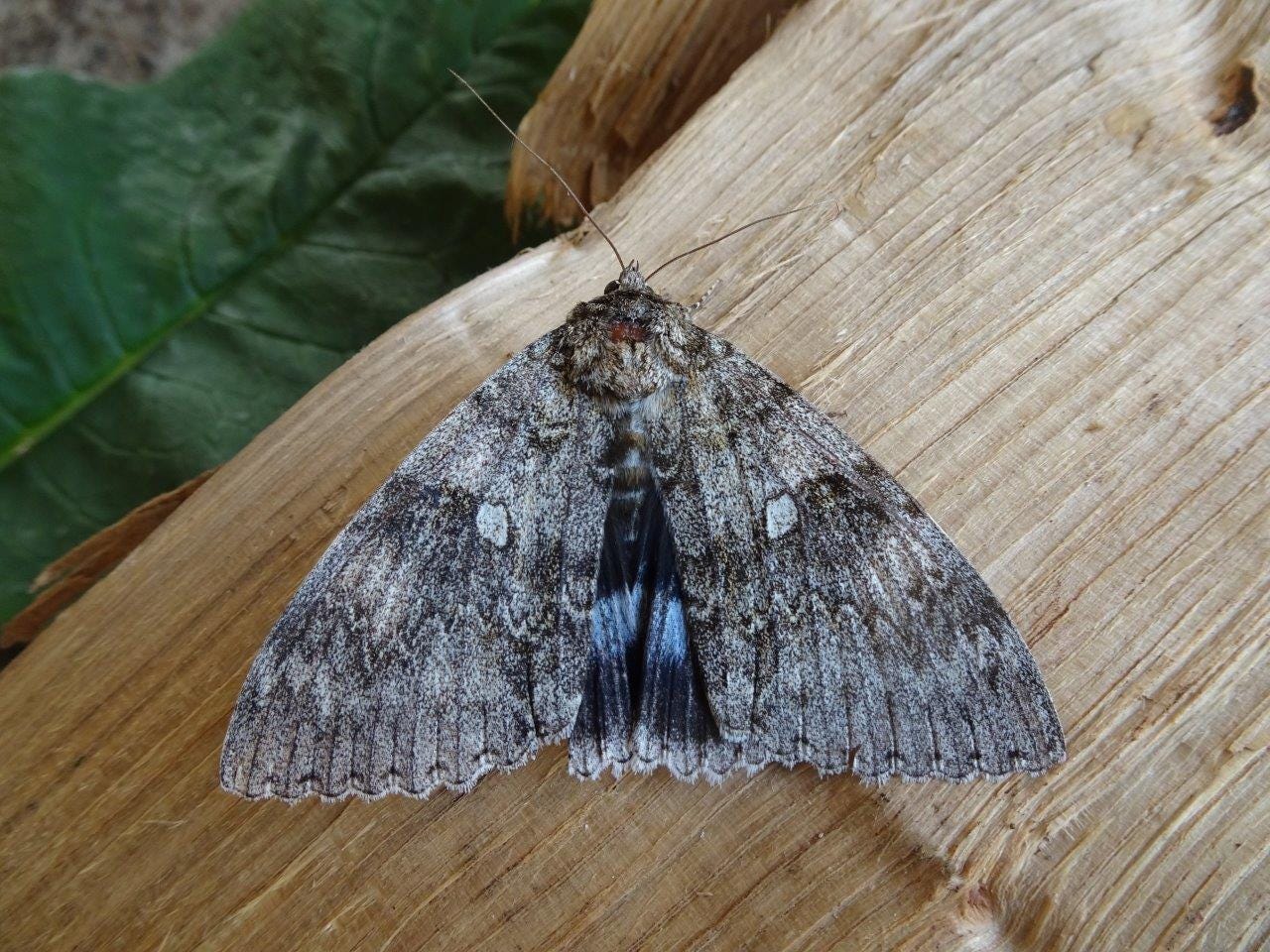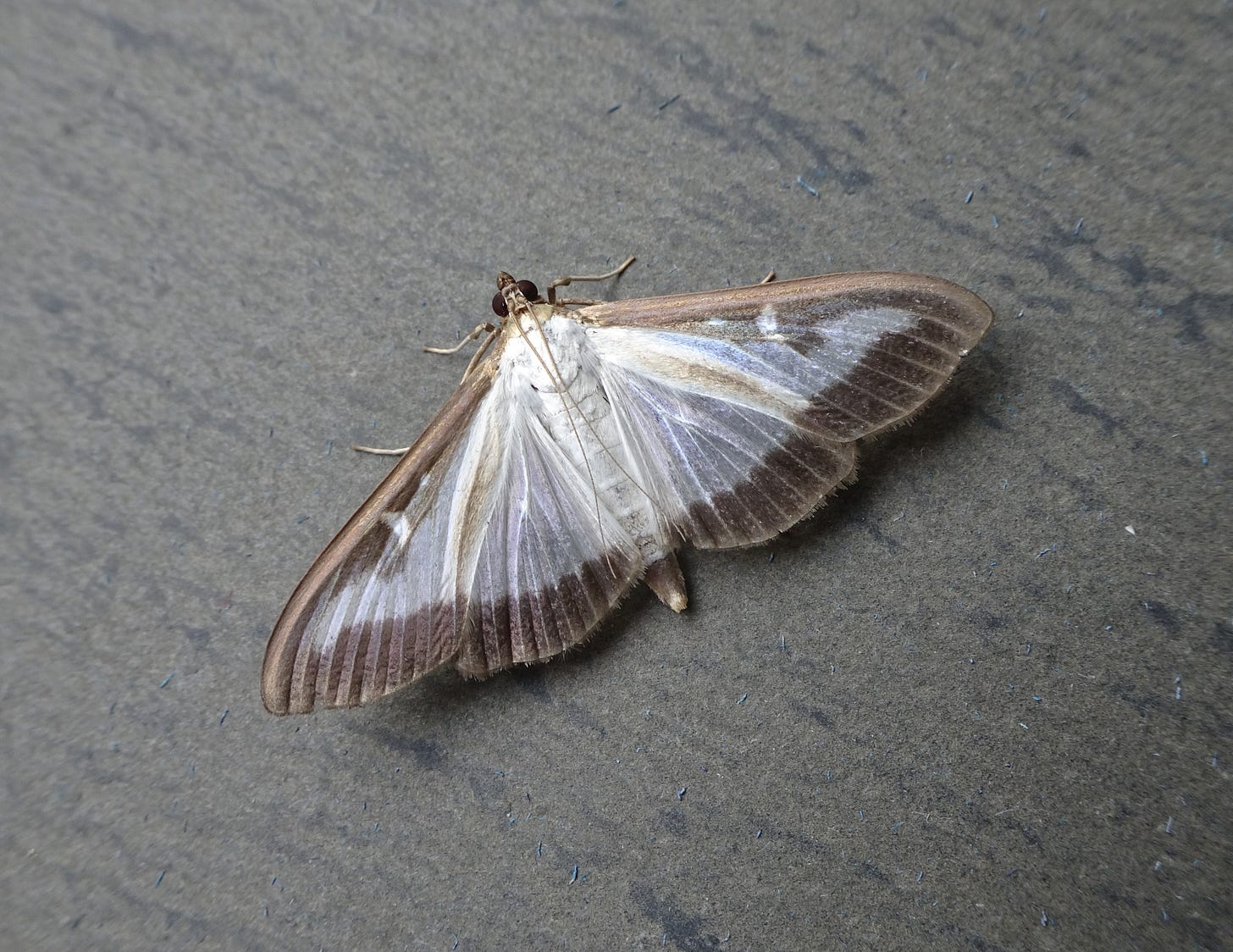A history of moths in Bentley Wood
This is one of of the best woodlands for moths in the country, writes John Muggleton

The history of moth recording in Bentley Wood is short in comparison to those localities visited by lepidopterists of the Victorian era. The first records seem to be those of Baron Charles de Worms from the 1940s, no doubt reflecting the fact that he was working at Porton Down during WW2.
Moth species of the British Isles are divided arbitrarily into macro-moths and micro-moths. Generally speaking the micro-moths belong to those moth families whose species are small and difficult to identify.
Baron Charles’ list of Wiltshire macrolepidoptera (macro moth) published in 1962 included records of 58 species in Bentley Wood.
We move forward to 1983 when Paul Waring carried out a survey of the macrolepidoptera in the Wood, in the course of which he recorded 315 species of macro moth. Paul’s survey did not include the micro moths.
It is largely as a result of Paul Waring’s survey that Bentley Wood gained SSSI status.
A further survey of the Wood was carried out in 2010 and 2011 by the WildCru team from Oxford University and by Martin Townsend. This survey recorded 276 species of macro-moths and 257 species of micro-moths, making a total of 533 species of moth living in Bentley Wood at the time.
Since then, recording has been carried out by a small group of volunteer moth trappers, probably no more than 12 over the last decade. Not all are local - we have one volunteer who comes from Cumbria!
As a result of these volunteer recording sessions, and a moth trap at Forestry Houses, the number of species recorded in the Wood is now 500 macros and 546 micros, a total of 1046 species.
The total number of macro-moths recorded from Wiltshire is 642, so we have in Bentley Wood 78% of the county’s macro-moths.
The last time that the number of micro-moths in Wiltshire were listed, there were 959 species. That number will be higher now, but we can say that we can say that we have over half of the county’s micro-moths.
We do need to be a little critical of this list, because it is an all-time list and some species may no longer be present. However, an analysis done recently by John Muggleton showed that only 23 of the 315 macro-moths recorded by Paul Waring appear to be no longer present.
Not bad, in these times of decreasing species numbers.
Some of the species on the list will be migrants and others will have wandered in from surrounding habitats. It might be argued that these should not be included on the list but some of the migrants may become established. The most spectacular example of this is the Clifden Nonpareil. This migrant species was first recorded in the wood in 2010 and is now well established here.

The wanderers may also become established if their food plants are present. The year 2021 saw first records of the Emperor moth and the Box-tree moth. The Emperor, a male, will have come from nearby downland where it is feeding on bramble and so would have no trouble finding something to eat here but the female is sedentary.
The Box-tree moth feeds on box and is a strong flier, but we don’t think that there is any box in the wood so should it be excluded from the list and the Emperor kept on?

I am also aware that the list includes records from the Bentley Wood Rothamsted trap which is some distance outside the wood’s boundaries. And then there is Upper Frenchmoor Copse in a different county and region of England.
Perhaps the answer to some of these questions is to ask what is the list for? I think it is there to inform and monitor the management of the Wood. Now we have a good idea of what is in the wood, we should list those species that can or do breed here and highlight those whose foodplants are restricted in their distribution so that we are better aware of habitat that needs protecting or improving.
Alternatively the foodplant might be widespread and the moth restricted in its distribution in the wood. An interesting dilemma is that of the Mere Wainscot, for which Bentley Wood is the only known colony in Wiltshire. The moth’s larvae feed on the Wood Small-Reed, an invasive grass which needs to be controlled in the wood.
Our recording has shown that the moth appears to be restricted to a small area of the wood and so control of the grass in other parts is unlikely to affect the moth.
Having a list also helps you to rank sites according to their biodiversity. Earlier this year Paul Waring issued a challenge in British Wildlife to find which wood in Britain had greatest number of recorded moth species. The answer appears to be Wytham Wood in Oxfordshire which may have 1,098 species. It houses Oxford University’s field station and so should be well recorded.
Bentley Wood might not have quite the longest list but it is certainly one of the best woodlands for moths in the country.



